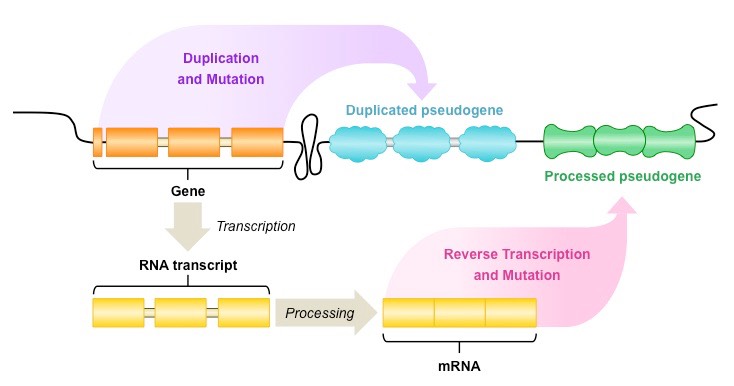A transposon is a segment of DNA that inserts itself into another section within the genome (i.e. ‘jumping' genes)
- Transposition often results in the duplication of the transposable element
- If the duplicated sequence then undergoes random mutation, a pseudogene will result
A pseudogene is a non-functional sequence of DNA that is homologous to an active gene
- Pseudogenes may be processed (retrotransposed) or non-processed (duplicated)
Processed pseudogenes
- Arise when a portion of an mRNA transcript is reverse transcribed back into DNA and inserted into the chromosomal DNA
- Processed pseudogenes consequently lack introns and promoter sequences, but may include a poly-A tract
- These pseudogenes may be randomly integrated anywhere in the genome
Non-processed pseudogenes
- Arise as a result of gene duplication and subsequent inactivation by mutation
- Non-processed pseudogenes will often be flanked by transcriptional regulatory elements (e.g. promoters, etc.)
- These pseudogenes are usually located adjacent to the original gene
Pseudogene Formation

